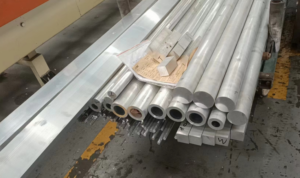High-speed steel, a highly specialized grade of tool steel, plays a pivotal role in the manufacturing industry due to its exceptional wear resistance, hardness, and red hardness characteristics. The ASTM standard for high-speed steel is a crucial aspect that ensures the quality, consistency, and reliability of these materials. In this article, I will delve into the intricacies of the ASTM standard for high-speed steel, highlighting its key components, requirements, and significance in the industrial landscape.

What is the ASTM standard for high-speed steel?
The ASTM, an international standards organization, publishes and maintains a comprehensive set of standards that cover various materials, products, and testing methods. These standards are widely recognized and accepted globally as the benchmark for quality and performance. When it comes to high-speed steel, the ASTM standard establishes a rigorous framework for its composition, mechanical properties, and manufacturing processes.
Firstly, the ASTM standard specifies the chemical composition of high-speed steel. This includes the permissible ranges for the primary alloying elements such as tungsten, molybdenum, chromium, vanadium, and cobalt. The precise balance of these elements is crucial in determining the steel’s hardness, wear resistance, and other critical properties. The standard ensures that the steel meets the required chemical composition, thus guaranteeing consistent performance across different applications.
Moreover, the ASTM standard outlines the mechanical properties that high-speed steel must possess. These properties, such as tensile strength, yield strength, impact toughness, and hardness, are crucial in evaluating the steel’s suitability for various cutting and machining tasks. The standard establishes minimum and maximum values for these properties, ensuring that the steel meets the performance criteria set forth by the industry.
Heat treatment is another crucial aspect addressed by the ASTM standard for high-speed steel. The standard specifies the heat treatment processes, including austenitizing, quenching, and tempering, that must be followed to achieve the desired microstructure and properties. These processes are critical in controlling the steel’s hardness, wear resistance, and toughness, thereby optimizing its performance in high-speed cutting applications.
Furthermore, the ASTM standard also covers the testing methods used to evaluate the properties of high-speed steel. These methods, such as hardness testing, tensile testing, impact testing, and chemical analysis, provide objective and quantifiable data that can be used to assess the steel’s quality and performance. By adhering to these testing methods, manufacturers can ensure that their high-speed steel products meet the requirements of the ASTM standard and are suitable for use in various industrial applications.
The significance of the ASTM standard for high-speed steel cannot be overstated. It provides a common language and set of criteria that manufacturers, suppliers, and end-users can rely on when dealing with high-speed steel. This ensures that the steel used in manufacturing processes meets the necessary quality and performance standards, thus promoting consistency and efficiency across the supply chain.
Moreover, the ASTM standard for high-speed steel also facilitates trade and commerce. Since the standard is widely recognized and accepted globally, it allows manufacturers to export their high-speed steel products to international markets with confidence. This, in turn, promotes competition and innovation within the industry, leading to the development of new and improved grades of high-speed steel.
Conclusion
In conclusion, the ASTM standard for high-speed steel is a comprehensive and rigorous framework that ensures the quality, consistency, and reliability of these critical materials. It specifies the chemical composition, mechanical properties, heat treatment processes, and testing methods that high-speed steel must meet.
Thank you for reading our article and we hope it can help you to have a better understanding of the ASTM standard for high-speed steel. If you are looking for high-speed steel suppliers and manufacturers online now, we would advise you to visit Sino Special Metal.
As a leading supplier of high-speed steel from Shanghai China, Sino Special Metal offers customers high-quality high-speed steel products at a very competitive price.




